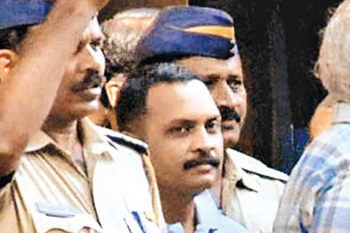Hyderabad, Feb 15: Lieutenant Colonel Shrikant Prasad Rao Purohit, an accused in the 2008 Malegaon terror attack case and a National Investigation Agency (NIA) witness in the 2007 Makkah Masjid terror attack case, turned hostile on Wednesday.

Purohit appeared before the fourth additional metropolitan sessions judge-cum-special court for NIA cases amid tight army security. He was cross-examined by the NIA counsel, before the prosecution declared him a "hostile witness".
While deposing before the court, he denied knowledge of the Makkah Masjid blast or any investigating agency recording his statement as a witness in the case. The reinstated officer denied meeting Swami Aseemanand alias Nabakumar Sarkar, the prime accused in the Makkah Masjid blast case, and spoke about Sunil Joshi, who was responsible for the bomb blast at Ajmer Dargah.
Around 1.25pm on May 18, 2007, a bomb blast on the Makkah Masjid premises during Friday prayers had killed nine people and wounded 58.
Prior to handing over the investigation of the Makkah Masjid blast case to NIA in 2007, the CBI, which had filed a chargesheet against the arrested culprits, had cited Purohit as prosecution witness number 106 and said he would prove that Aseemanand had called him on December 29, 2007 and told him that Sunil Joshi was murdered and was "apna banda". NIA had abated the action against Sunil Joshi, since he had died.
Purohit, deposing before the court, said he had served in the counter-intelligence cell of the Indian Army and met several people, but did not have any knowledge about the accused allegedly involved in the Makkah Masjid blast case.
The officer also disowned the 'Abhinav Bharat Trust' and told the court that he never founded it. Purohit, however, said he knew Ajay Rahirkar and Kulkarni, accused in the Malegaon-II bomb blast case.
He told the court that his stand before the Supreme Court was without any prior inquiry he was detained in jail for nine years. In August 2017, the SC had granted Purohit bail in the 2008 Malegaon blast case.








Comments
Add new comment